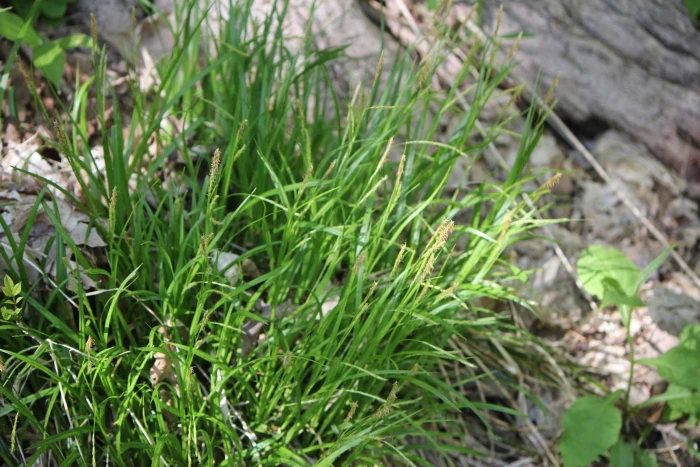Forest Sedge
(Carex sylvatica)
Forest Sedge (Carex sylvatica)
/
/

© Quinten Wiegersma
CC BY 4.0
Image By:
© Quinten Wiegersma
Recorded By:
Copyright:
CC BY 4.0
Copyright Notice:
Photo by: © Quinten Wiegersma | License Type: CC BY 4.0 | License URL: http://creativecommons.org/licenses/by/4.0/ | Uploader: birds_bugs_botany | Publisher: iNaturalist |























Estimated Native Range
Climate Requirements for Conway, Arkansas
| This Plant | Your Site | Plant Suitability for Your Location | ||
|---|---|---|---|---|
| • Precipitation | 10" - 150" | 50" | Aquatic | Aquatic |
| • High Temp. | 47°F - 90°F | 93°F | Your summers may be too hot for this plant. | Too hot |
| • Low Temp. | -11°F - 45°F | 28°F | Your winter temperatures are normal for this plant | Excellent |
This plant may not grow well at your location - your precipitation is too high.
Summary
Carex sylvatica, commonly known as Forest Sedge or European Woodland Sedge, is a perennial herb native to a variety of habitats including deciduous woodlands, damp and shady forest floors, and along stream banks in Europe and Western Asia. It has also naturalized in parts of North America and New Zealand. This sedge typically grows to 24 inches tall and features arching, grass-like leaves. The inflorescence consists of 3-5 pendent female spikes and a single terminal male spike, which are greenish-brown and not particularly showy, appearing in late spring to early summer.
Forest Sedge is valued for its ability to thrive in heavy, clay soils and its preference for shady conditions, making it an excellent ground cover for woodland gardens, shaded borders, or underplanting beneath trees and shrubs. It is also useful for stabilizing soil in damp areas. In cultivation, it requires consistently moist soil and can tolerate partial to full shade. While it is not aggressive, it can form dense clumps over time. Gardeners should be aware that in some conditions, it may self-seed and spread, though it is not generally considered invasive.CC BY-SA 4.0
Forest Sedge is valued for its ability to thrive in heavy, clay soils and its preference for shady conditions, making it an excellent ground cover for woodland gardens, shaded borders, or underplanting beneath trees and shrubs. It is also useful for stabilizing soil in damp areas. In cultivation, it requires consistently moist soil and can tolerate partial to full shade. While it is not aggressive, it can form dense clumps over time. Gardeners should be aware that in some conditions, it may self-seed and spread, though it is not generally considered invasive.CC BY-SA 4.0
Plant Description
- Plant Type: Grass
- Height: 1.5-2 feet
- Width: 1-1.5 feet
- Growth Rate: Slow, Moderate
- Flower Color: N/A
- Flowering Season: Spring, Summer
- Leaf Retention: Evergreen
Growth Requirements
- Sun: Full Shade
- Water: Medium
- Drainage: Medium, Slow
Common Uses
Border Plant, Groundcover, Low Maintenance, Water Garden
Natural Habitat
Deciduous woodlands, damp and shady forest floors, and along stream banks
Other Names
Common Names: Woodland Sedge, Forest Sedge
Scientific Names: Carex sylvatica, Carex capillaris, Carex laxula, Carex patula, Carex sylvatica var. laxula, Edritria sylvatica, Proteocarpus sylvaticus, Trasus sylvaticus
GBIF Accepted Name: Carex sylvatica